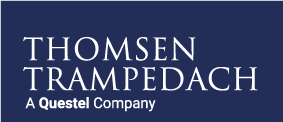Project Description
Our Resources
Trademarks And Search Results On Amazon.de

The use of competitors’ trademarks for the purposes of keyword advertising (specifically through the Google AdWords service) has been the subject of a significant body of case law on both European and national levels. However, the applicability of this case law to situations where a trademarked keyword has not been chosen by an advertiser but is linked to advertising through the operation of an algorithm remains unclear. A recent judgment of the German Federal Court (Bundesgerichtshof) confirms that CJEU case law on keyword advertising applies to Amazon’s display of search results for keywords identical to registered trademarks. This presents novel opportunities for brand owners concerned with the use of their trademarks by the Amazon.de search engine.
The Court of Justice of the European Union (CJEU) has on several occasions been called upon to rule on whether a trademark can be infringed by its use as a keyword to trigger advertising from competitors in search engines. To date, the CJEU has taken a permissive approach to such keyword use, clearly conscious of the goal of encouraging competition in the digital single market. As a result, it has developed a set of principles according to which the use of a trademark as a keyword will only infringe the rights of the proprietor where it has a negative effect on the functions of the mark, most crucially on its essential function of indicating origin.[1]
The CJEU has developed a test according to which keyword use is permitted unless the advert triggered does not allow the average search engine user to determine whether the advert is economically linked to the trademark proprietor or to an unrelated party.[2] With regards to the question as to who has responsibility for any potential infringement resulting from keyword advertising, the CJEU has been careful to protect the role of the search engine operator as a neutral intermediary. Where the search engine operator merely creates the conditions necessary for an advertiser to choose a competing trademark as a keyword, they do not themselves make use of that trademark.[3]
This begs the important question how the question of responsibility should be approached in situations where the trademarked term is chosen as a keyword not by the advertiser, but rather as a consequence of the operation of a search engine algorithm. In these cases, the search engine operator has far greater involvement in the use of the trademark than with traditional keyword advertising, which speaks for the operator being assigned responsibility. However, advanced search algorithms may behave in ways that lack transparency, which may result in search engine operators bearing liability for infringements that they may be unaware of. The question then becomes whether a search engine operator should be liable for the risk of their algorithm using a trademark in an infringing manner. The decision of the German Federal Court in Ortlieb[4] deals with precisely this question.
Ortlieb
Ortlieb manufactures back bags and out-wear that it sells through a variety of outlets, including amazon.de. However, a search on Amazon.de for the search term “ortlieb” generates results not only for Ortlieb products, but also for a number of competing brands.

- Illustration of search results currently (11.9.2018) displayed on Amazon.de in response to a query for Ortlieb.
Ortlieb brought an action against Amazon’s European subsidiary in the Munich District Court, seeking an injunction against the display of competing products, which they argued constituted trademark infringement on the part of Amazon. Amazon disputed this, arguing that 1) there was no use of the trademark given that their algorithm merely compiles results based on relevance, in turn based on prior user behaviour and 2) the use of the mark was not confusing as the average internet user is familiar with unrelated listings being displayed in response to queries for a particular brand.
Both the District Court, and on appeal the Munich Higher Regional Court rejected Amazon’s arguments. The Higher Regional Court held that Amazon must be held responsible for the operation of the algorithm, as they have created it and are in control of its operation. Interestingly, the Court held that Amazon search results cannot be treated as keyword advertising. Thus, the case law of the CJEU developed in that regard was not directly applicable. Rather, Amazon had to be treated as using the Ortlieb trademark in connection with unrelated but identical goods. Thus, the Higher Regional Court upheld the injunction prohibiting Amazon from displaying unrelated search results in response to queries for Ortlieb.[5]
However, the Federal Court disagreed with the Munich courts in regard to the applicability of the Keyword Advertising Principles, holding that these apply to all instances where a trademark is chosen as a keyword to trigger advertising. The question of whether the Ortlieb trademark can be infringed by the display of unrelated listings has to be answered through an application of those principles. Further, the person legally responsible for the “use” is the one making the choice as to using the trademark as the keyword. Thus, Amazon bears responsibility for any trademark infringement as the association between the Ortlieb search term and the unrelated listings arose by operation of the algorithm that Amazon set up, supports and continues to control.
The Court continued to hold, in accordance with CJEU case law, that the question of infringement hinged on whether the search results shown enable the average user to determine that they are not economically linked to the trademark proprietor, but rather to its competitors. This question falls to be answered on the basis of the search result snippets displayed, having particular regard to the general knowledge and expectations of the average internet user.
However, as the lower courts had not made a final determination in this regard, the Federal Court remanded the case back to the Munich Higher Regional Court for reassessment. With the final decision still pending, it remains to be seen whether that Court will give weight to the fact that in Amazon’s search engine, Ortlieb’s product listings are not separated from those of competitors. This contrasts with the layout of e.g. Google search, where organic results and ads are separated.
Impact
In its decision the Federal Court provides important guidance on the application of the keyword advertising principles to cases where linkages between trademarks and advertising appear in web content as a consequence of the actions of algorithms. While the practical consequences of the Ortlieb judgment remain unknown, it is likely that it will lead to Amazon being forced to pay greater attention to situations where its algorithm generates search results that are particularly confusing.
What constitutes a confusing display search result is, according to the court, highly dependent on the particular facts of the case, and on any presumptions that may reasonably be drawn about the behaviour and expectations of the average internet user. With regards to Google AdWords, the German courts have held[6] that the average user does not expects ads, when clearly marked as such and kept separate from “organic” search results, to necessarily be linked to the trademark proprietor. As stated before, this does not apply to Amazon’s search results, where all results are displayed together with no separation between listings that specifically mention the trademark and those that are unrelated. The average internet user may in many cases therefore assume that all search results are somehow related to the trademark. Depending on the final decision of the Munich court and any subsequent revision by the Federal Court, it is possible that the design of Amazon.de would have to be amended to introduce greater separation between the different types of search results in order to minimise user confusion.
A confusing display of search results may also follow from the nature of the trademarked keyword itself. This was seen in the Interfloradecision of the CJEU, where the Court of Justice stated that the fact that the Interflora brand referred to a wide and varied franchise network meant that internet users may find it particularly difficult to determine whether an ad displayed in response to a search for the brand was economically linked to this network.[7] This was confirmed by the German Federal Court in its judgment in Fleurop.[8] The author has previously suggested (https://www.thomsentrampedach.com/insights/trademarked-chemicals-in-adwords) that the same would apply in cases where a brand refers to a chemical ingredient that is sold to wide variety of manufacturers that in turn advertise products on the retail market. As the trademarked ingredient does not normally correlate with any particular retail brand but is on the contrary found in a large variety of brands, the consumer is likely to assume that the product advertised contains the chemical absent express denial in the ad text/search snippet itself.
A separate issue is whether liability for confusing search results is dependent on the online marketplace having actual awareness of the infringing content. In the EU, online marketplaces are as a rule of thumb covered by the safe harbour extended to hosting providers by Article 14 of the E-Commerce Directive[9], whereby a hosting provider is not liable unless it has actual knowledge of the illicit information. This was confirmed by the CJEU in L’Oréal v eBay[10], where the Court held that eBay is covered by the hosting safe harbour in so far as it stores the product listings of sellers. However, the Court also held that where a marketplace assumes an active role e.g. by optimising the presentation of the listings, it is no longer covered by the safe harbour. Given that in the case of the Amazon search engine, the confusing display of results involves Amazon taking an active role with regards to the content it stores, it is likely that it would fall without the safe harbour. Amazon’s liability would therefore not depend on them having actual knowledge. Nevertheless, this question is unlikely to be of practical relevance (outside quantum of damages), as a detailed complaint will normally be sufficient to create actual knowledge.
From a practical perspective, the decision of the Federal Court creates opportunities for brand owners concerned with the display of competing listings in Amazon searches for their brand names. It suggests that Amazon will, at least in connection with its German marketplace, be forced to adopt a policy where notices of infringements are accepted against the display of confusing search results. The same would naturally apply to any other e-commerce platform active on the German market and utilising a similar algorithm. As it is likely that an identical set of issues will be brought before the courts of the other Member States, it will be interesting to see whether the approach of the German Federal Court is met with approval in these other jurisdictions and, ultimately, by the CJEU itself.
Thomsen Trampedach offers the full spectrum of trademark enforcement measures across online marketplaces, both in Germany and worldwide. The author is available to assist with any issues faced by trademark proprietors in connection with confusing search results on German marketplaces.
